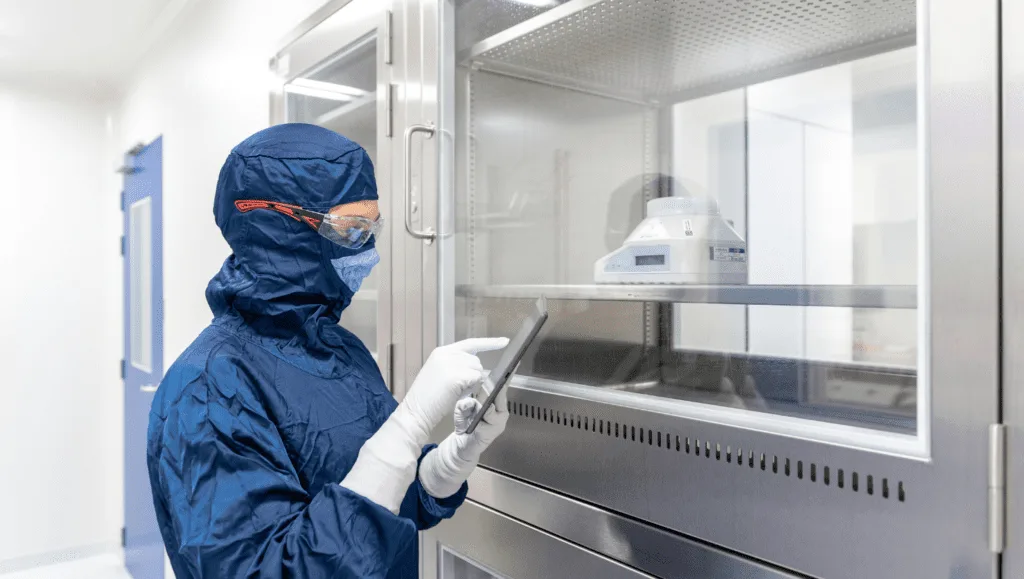Laboratory ovens are indispensable pieces of equipment in various scientific applications, from drying and curing materials to sterilizing tools. Whether you’re in pharmaceuticals, electronics, or material testing, selecting the right oven is crucial for achieving accurate and consistent results. This guide will explore the differences between forced convection, natural convection, and vacuum ovens, helping you make an informed decision for your laboratory needs. We’ll also highlight trusted suppliers like Jeiotech and Being International, ensuring you have access to our high-quality range of laboratory ovens in South Africa.
Understanding Convection in Laboratory Ovens
Convection refers to the method of heat transfer within an oven, ensuring uniform temperatures. There are two primary types of convection systems: forced convection and natural convection. Each has unique advantages depending on your application.
Forced Convection Ovens
- How it works: Forced convection ovens use a fan to circulate heated air throughout the chamber, ensuring even temperature distribution. This system is ideal for processes requiring precise and consistent heating.
- Applications: Commonly used in industries like pharmaceuticals, electronics, and material testing, forced convection ovens are perfect for drying, curing, aging tests, and baking. For high-quality options, consider Jeiotech a leading supplier of advanced laboratory equipment.
Natural Convection Ovens
- How it works: Natural convection relies on the natural movement of air caused by temperature differences. Heated air rises, and cooler air is drawn in, creating gentle circulation without a fan.
- Applications: These ovens are ideal for drying delicate materials or processes where minimal airflow is necessary to prevent contamination. For reliable natural convection ovens, explore Being International, a trusted name in laboratory equipment in South Africa.
Key Differences Between Forced and Natural Convection
- Temperature uniformity: Forced convection offers superior uniformity and faster heating times.
- Energy efficiency: Natural convection is more energy-efficient for small-scale operations.
- Material suitability: Forced convection is better for heat-sensitive materials, while natural convection is ideal for general applications.
What is a Vacuum Oven and Its Applications?
Vacuum ovens are specialized equipment designed for processes requiring low-pressure conditions. By reducing pressure inside the chamber, these ovens enable rapid drying, outgassing, and curing without oxidation or contamination.
How It Works
Vacuum ovens create a vacuum inside the chamber, lowering the boiling point of liquids and accelerating evaporation. This is particularly useful for drying heat-sensitive materials or those prone to decomposition under standard conditions.
Applications of Vacuum Ovens
- Drying heat-sensitive materials: Ideal for organic materials, electronics, and components that degrade under high temperatures.
- Outgassing: Used to remove trapped gases from metals, polymers, or composites.
- Sterilization: Ensures moisture removal and prevents oxidation during sterilization.
Other Important Considerations When Choosing Laboratory Ovens
When selecting the right oven for your laboratory, consider the following factors:
Temperature Range
- Different processes require specific temperature ranges. High-temperature ovens are essential for sterilization, while lower ranges suffice for drying or testing.
Size and Capacity
- Ensure the oven’s interior dimensions meet your needs. Whether you need a compact unit or a larger chamber, options are available to suit your requirements.
Control Features
- Look for digital controllers with precise temperature settings, programmable options, and user-friendly interfaces for better control.
Materials and Construction
- High-quality materials like stainless steel interiors and durable insulation ensure longevity and energy efficiency.
Safety Features
- Features like temperature overrun protection, automatic shutoff, and alarms are essential for safe operation.
Summary of Key Factors to Consider
- Convection Type: Forced convection for precise heating vs. natural convection for gentle drying.
- Temperature Range: Choose based on your process requirements.
- Vacuum Ovens: Ideal for heat-sensitive drying and outgassing.
- Size and Features: Ensure the oven fits your space, capacity, and control needs.
By understanding the differences between forced convection, natural convection, and vacuum ovens, you can confidently select the right oven for your laboratory. For reliable options, explore Jeiotech and Being International, trusted suppliers of laboratory equipment in South Africa.




